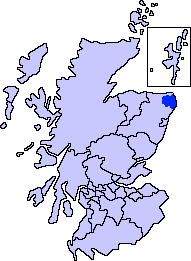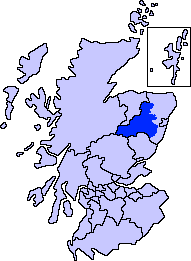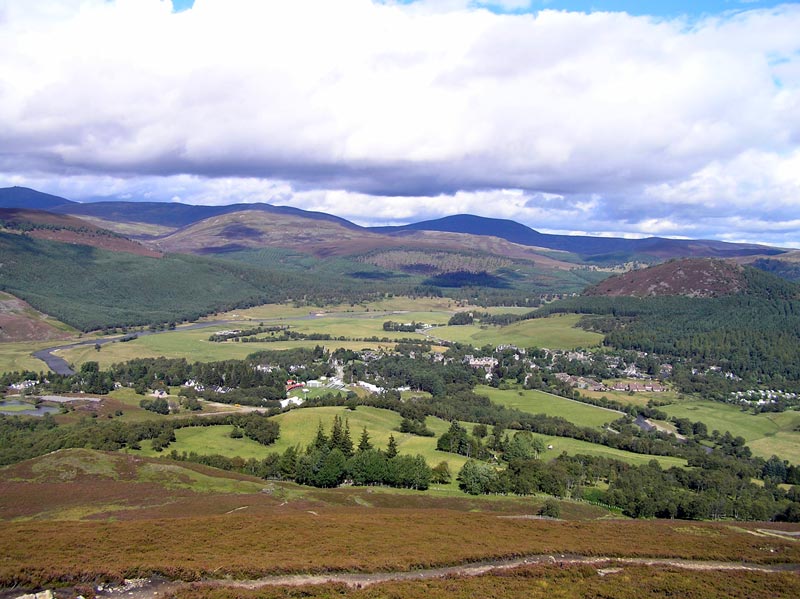|
Earl Of Mar
There are currently two earldoms of Mar in the Peerage of Scotland, and the title has been created seven times. The first creation of the earldom is currently held by Margaret of Mar, 31st Countess of Mar, who is also clan chief of Clan Mar. The seventh creation is currently held by James Erskine, 14th Earl of Mar and 16th Earl of Kellie, who is also clan chief of Clan Erskine. The earldom is an ancient one. The first named earl is Ruadrí, who is known to have been alive in 1128, though an unnamed earl is mentioned as being present at the Battle of Clontarf in 1014. In 1435 the earldom was seized by King James II, and was then granted to several royal children who produced no heirs. The sixth creation was for James Stewart, illegitimate son of King James V, who was stripped of the title after a rebellion in 1565. The title was then granted to John Erskine, a descendant of the original earls. In 1866 the then-earl died childless, and it was unclear whether the earldom s ... [...More Info...] [...Related Items...] OR: [Wikipedia] [Google] [Baidu] |
James II Of Scotland
James II (16 October 1430 – 3 August 1460) was King of Scots from 1437 until his death in 1460. The eldest surviving son of James I of Scotland, he succeeded to the Scottish throne at the age of six, following the assassination of his father. The first Scottish monarch not to be crowned at Scone, James II's coronation took place at Holyrood Abbey in March 1437. After a reign characterised by struggles to maintain control of his kingdom, he was killed by an exploding cannon at Roxburgh Castle in 1460. Life James was born in Holyrood Abbey.Grants "Old and New Edinburgh" He was the son of King James I and Joan Beaufort. By his first birthday, his only brother, his older twin, Alexander, had died, thus leaving James as heir apparent with the title Duke of Rothesay. On 21 February 1437, James I was assassinated, and the six-year-old James immediately succeeded him as James II. He was crowned in Holyrood Abbey by Abbot Patrick on 23 March 1437. On 3 July 1449, the eighteen-year ... [...More Info...] [...Related Items...] OR: [Wikipedia] [Google] [Baidu] |
John Erskine, Earl Of Mar (died 1572)
John Erskine, 6th Earl of Mar (died 28 October 1572) was a Scottish aristocrat and politician. He was the custodian of the infant James VI of Scotland and Regent of Scotland. Erskine was a son of John Erskine, 5th Lord Erskine and Lady Margaret Campbell, a daughter of Archibald Campbell, 2nd Earl of Argyll. His father was a guardian of King James V and afterwards of Mary, Queen of Scots. Career John was Commendator of Dryburgh Abbey from 1547, He succeeded his father as 6th Lord Erskine in 1552. Erskine joined the religious reformers in 1559, but was never very ardent in the cause. He did subscribe to the letter asking the Calvinist reformer John Knox to return to Scotland in 1557. The custody of Edinburgh Castle was in his hands during the struggle between the regent, Mary of Guise, and the Lords of the Congregation, during which he appears to have acted consistently in the interests of peace. When Mary, Queen of Scots, returned to Scotland in 1561 Lord Erskine was a me ... [...More Info...] [...Related Items...] OR: [Wikipedia] [Google] [Baidu] |
Latin Language
Latin (, or , ) is a classical language belonging to the Italic branch of the Indo-European languages. Latin was originally a dialect spoken in the lower Tiber area (then known as Latium) around present-day Rome, but through the power of the Roman Republic it became the dominant language in the Italian region and subsequently throughout the Roman Empire. Even after the fall of Western Rome, Latin remained the common language of international communication, science, scholarship and academia in Europe until well into the 18th century, when other regional vernaculars (including its own descendants, the Romance languages) supplanted it in common academic and political usage, and it eventually became a dead language in the modern linguistic definition. Latin is a highly inflected language, with three distinct genders (masculine, feminine, and neuter), six or seven noun cases (nominative, accusative, genitive, dative, ablative, and vocative), five declensions, four verb ... [...More Info...] [...Related Items...] OR: [Wikipedia] [Google] [Baidu] |
Book Of Deer
The ''Book of Deer'' (''Leabhar Dhèir'' in Gaelic) (Cambridge University Library, MS. Ii.6.32) is a 10th-century Latin Gospel Book with early 12th-century additions in Latin, Old Irish and Scottish Gaelic. It contains the earliest surviving Gaelic writing from Scotland. The origin of the book is uncertain, but it is reasonable to assume that the manuscript was at Deer, Aberdeenshire, Scotland, when the marginalia were made. It may be the oldest surviving manuscript produced in Scotland (although see ''Book of Kells''), and is notable for having possibly originated in what is now considered a Lowland area. The manuscript belongs to the category of Irish pocket gospel books, which were produced for private use rather than for church services. While the manuscripts to which the Book of Deer is closest in character are all Irish, most scholars argue for a Scottish origin, although the book was undoubtedly written by an Irish scribe. The book has 86 folios; the leaves mea ... [...More Info...] [...Related Items...] OR: [Wikipedia] [Google] [Baidu] |
Floruit
''Floruit'' (; abbreviated fl. or occasionally flor.; from Latin for "they flourished") denotes a date or period during which a person was known to have been alive or active. In English, the unabbreviated word may also be used as a noun indicating the time when someone flourished. Etymology and use la, flōruit is the third-person singular perfect active indicative of the Latin verb ', ' "to bloom, flower, or flourish", from the noun ', ', "flower". Broadly, the term is employed in reference to the peak of activity for a person or movement. More specifically, it often is used in genealogy and historical writing when a person's birth or death dates are unknown, but some other evidence exists that indicates when they were alive. For example, if there are wills attested by John Jones in 1204, and 1229, and a record of his marriage in 1197, a record concerning him might be written as "John Jones (fl. 1197–1229)". The term is often used in art history when dating the career ... [...More Info...] [...Related Items...] OR: [Wikipedia] [Google] [Baidu] |
Aberdeenshire
Aberdeenshire ( sco, Aiberdeenshire; gd, Siorrachd Obar Dheathain) is one of the 32 council areas of Scotland. It takes its name from the County of Aberdeen which has substantially different boundaries. The Aberdeenshire Council area includes all of the area of the historic counties of Aberdeenshire and Kincardineshire (except the area making up the City of Aberdeen), as well as part of Banffshire. The county boundaries are officially used for a few purposes, namely land registration and lieutenancy. Aberdeenshire Council is headquartered at Woodhill House, in Aberdeen, making it the only Scottish council whose headquarters are located outside its jurisdiction. Aberdeen itself forms a different council area (Aberdeen City). Aberdeenshire borders onto Angus and Perth and Kinross to the south, Highland and Moray to the west and Aberdeen City to the east. Traditionally, it has been economically dependent upon the primary sector (agriculture, fishing, and forestry) and rel ... [...More Info...] [...Related Items...] OR: [Wikipedia] [Google] [Baidu] |
Buchan
Buchan is an area of north-east Scotland, historically one of the original provinces of the Kingdom of Alba. It is now one of the six committee areas and administrative areas of Aberdeenshire Council, Scotland. These areas were created by the council in 1996, when the Aberdeenshire council area was created under the Local Government etc (Scotland) Act 1994. The council area was formed by merging three districts of the Grampian Region: Banff and Buchan, Gordon and Kincardine and Deeside. The committee area of Buchan was formed from part of the former district of Banff and Buchan. Etymology The genesis of the name ''Buchan'' is shrouded in uncertainty, but may be of Pictish origin. The name may involve an equivalent of Welsh ''buwch'' meaning "a cow". American academic Thomas Clancy has noted cautiously the similarity between the territory names ''Buchan'' and '' Marr'' to those of the Welsh commotes '' Cantref Bychan'' and ''Cantref Mawr'', meaning "small-" and "larg ... [...More Info...] [...Related Items...] OR: [Wikipedia] [Google] [Baidu] |
Marr
Marr (Scottish Gaelic: ''Màrr'') is one of six committee areas in Aberdeenshire, Scotland. It has a population of 34,038 (2001 Census). Someone from Marr is called a ''Màrnach'' in Scottish Gaelic. Etymology The genesis of the name ''Marr'' is uncertain. ''Mar'', a Brittonic personal name, may be involved. Further possibilities include a connection with the ethnic names ''Marsi'' and ''Marsigni'' of Italy and Bohemia, or a derivation from Old Norse ''marr'' meaning "sea, marsh, fen". American academic Thomas Clancy has noted cautiously the similarity between the territory names ''Buchan'' and ''Marr'' to those of the Welsh commotes '' Cantref Bychan'' and ''Cantref Mawr'', meaning "large-" and "small-commote", respectively. Linguist Guto Rhys adjudged the proposal "appealing" but "questionable", on the basis that the form ''Marr'' conflicts with the expected development of ''mawr''. Features To the west, the mountain environment of the Cairngorms National Park susta ... [...More Info...] [...Related Items...] OR: [Wikipedia] [Google] [Baidu] |
River Don, Aberdeenshire
The River Don ( gd, Deathan) is a river in north-east Scotland. It rises in the Grampians and flows eastwards, through Aberdeenshire, to the North Sea at Aberdeen. The Don passes through Alford, Kemnay, Inverurie, Kintore, and Dyce. Its main tributary, the River Ury, joins at Inverurie. Course of the river The Don rises in the peat flat beneath ''Druim na Feithe'', and in the shadow of Glen Avon, before flowing quietly past the ice-age moraine and down to Cock Bridge, below the picturesque site of the recently demolished Delnadamph Lodge. Several streams, the Dhiver, Feith Bhait, Meoir Veannaich, Cock Burn and the Allt nan Aighean merge to form the embryonic Don. Water from the north of Brown Cow Hill () drains into the Don, while water from the west side runs into the River Spey and that from the south side into the Dee. The Don follows a circuitous route eastwards past Corgarff Castle, through Strathdon and the Howe of Alford before entering the North Sea just no ... [...More Info...] [...Related Items...] OR: [Wikipedia] [Google] [Baidu] |
Mar Lodge Estate
Mar Lodge Estate is a highland estate in western Aberdeenshire, Scotland, which has been owned and managed by the National Trust for Scotland (NTS) since 1995. Its principal building, Mar Lodge, is about west of the village of Braemar. The estate is recognised as one of the most important nature conservation landscapes in the British Isles and occupies nearly 8% of the Cairngorms National Park, covering . The natural heritage value of the estate is reflected by the fact that much of it is designated as a Site of Special Scientific Interest (SSSI), a Special Area of Conservation (SAC) and a Special Protection Area (SPA).''Whole Estate Forest Plan'', National Trust for Scotland, 2012 The entire estate has been classified as a national nature reserve since May 2017, and is designated a Category II protected area by the International Union for Conservation of Nature. Extreme weather conditions are experienced across the estate, especially on the plateau. Landslides, avalanches and ... [...More Info...] [...Related Items...] OR: [Wikipedia] [Google] [Baidu] |
Braemar
Braemar is a village in Aberdeenshire, Scotland, around west of Aberdeen in the Highlands. It is the closest significantly-sized settlement to the upper course of the River Dee sitting at an elevation of . The Gaelic ''Bràigh Mhàrr'' properly refers to the area of upper Marr (as it literally means), i.e. the area of Marr to the west of Aboyne, the village itself being Castleton of Braemar (''Baile a' Chaisteil''). The village used to be known as ''Cinn Drochaid'' (bridge end); ''Baile a' Chaisteil'' referred to only the part of the village on the east bank of the river, the part on the west bank being known as ''Ach an Droighinn'' (thorn field). Geography Braemar is approached from the South on the A93 from Glen Clunie and the Cairnwell Pass and from the East also on the A93 from Deeside. Braemar can be approached on foot from the West through Glen Tilt, Glen Feshie, Glen Dee (by the Lairig Ghru), and Glen Derry (by the Lairig an Laoigh). Braemar is within a one- ... [...More Info...] [...Related Items...] OR: [Wikipedia] [Google] [Baidu] |
River Dee, Aberdeenshire
The River Dee ( gd, Uisge Dhè) is a river in Aberdeenshire, Scotland. It rises in the Cairngorms and flows through southern Aberdeenshire to reach the North Sea at Aberdeen. The area it passes through is known as Deeside, or Royal Deeside in the region between Braemar and Banchory because Queen Victoria came for a visit there in 1848 and greatly enjoyed herself. She and her husband, Prince Albert, built Balmoral Castle there which replaced an older castle. Deeside is a popular area for tourists, due to the combination of scenic beauty and historic and royal associations. It is part of the Cairngorms National Park, and the Deeside and Lochnagar National Scenic Area. The Dee is popular with anglers and is one of the most famous salmon fishing rivers in the world. The New Statistical Account of Scotland attributed the name Dee as having been used as early as the second century AD in the work of the Alexandrian geographer Claudius Ptolemy, as ''Δηοῦα'' (=Deva), meaning ... [...More Info...] [...Related Items...] OR: [Wikipedia] [Google] [Baidu] |

.jpg)




_(34).jpg)

